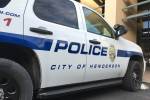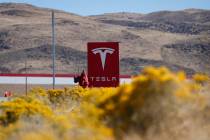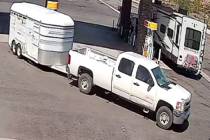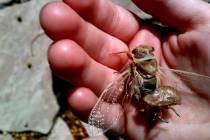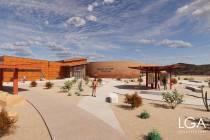Strawberry Fire has left a destructive mark at Great Basin National Park


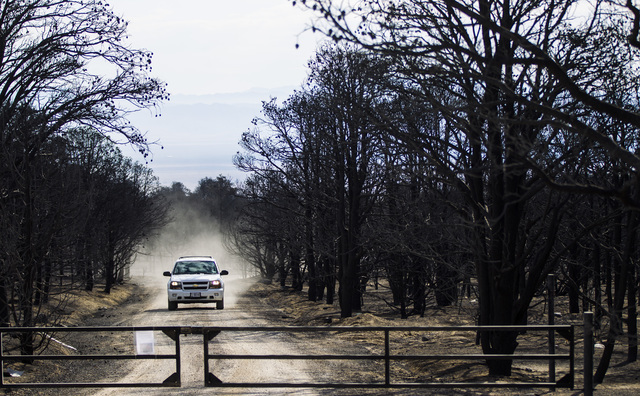
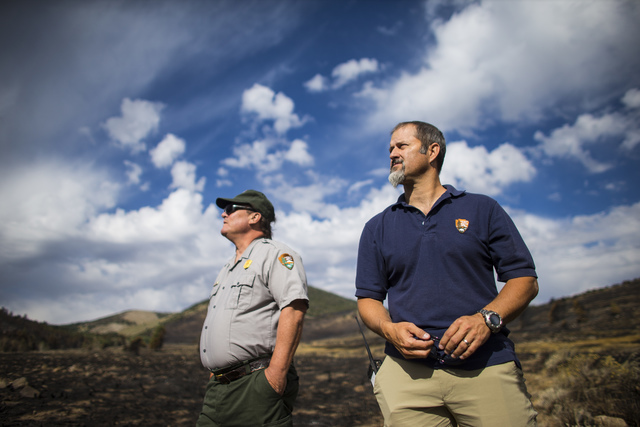
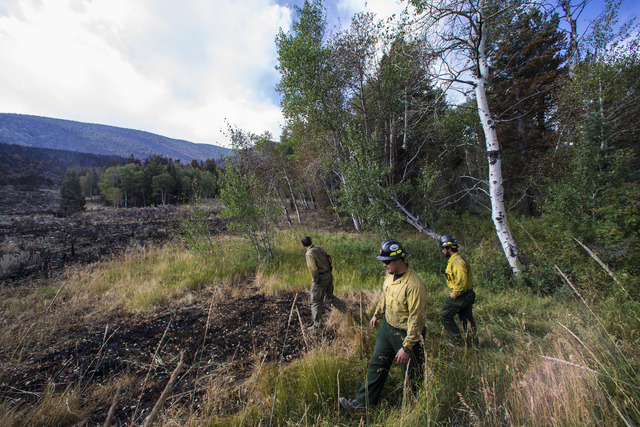
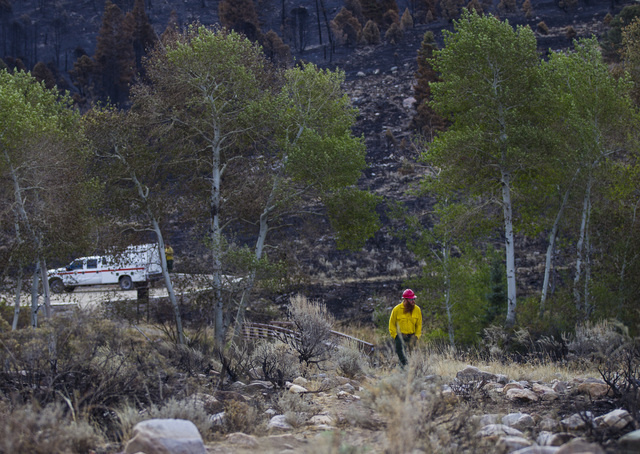
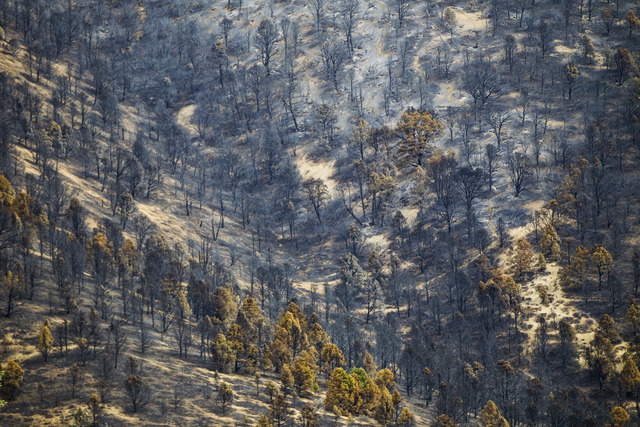
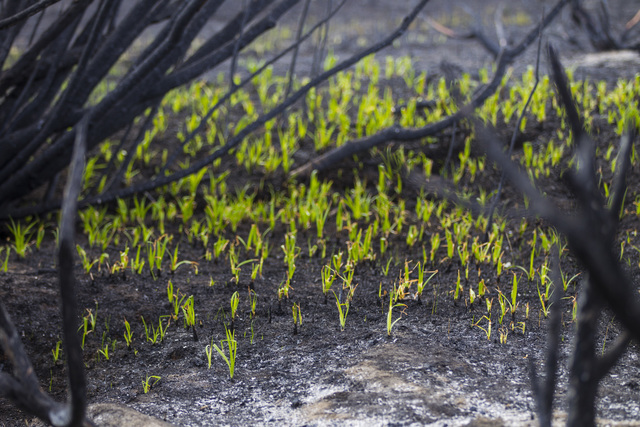


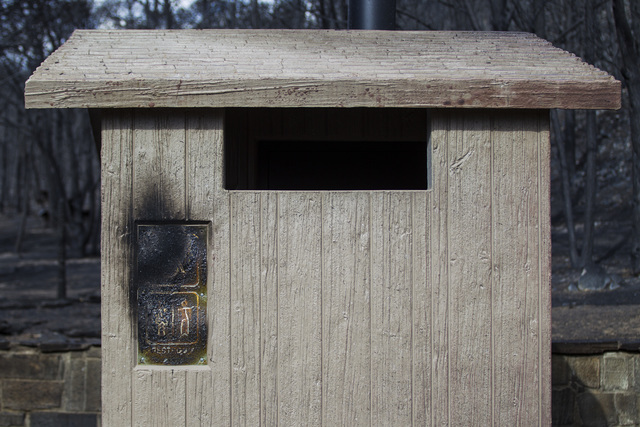
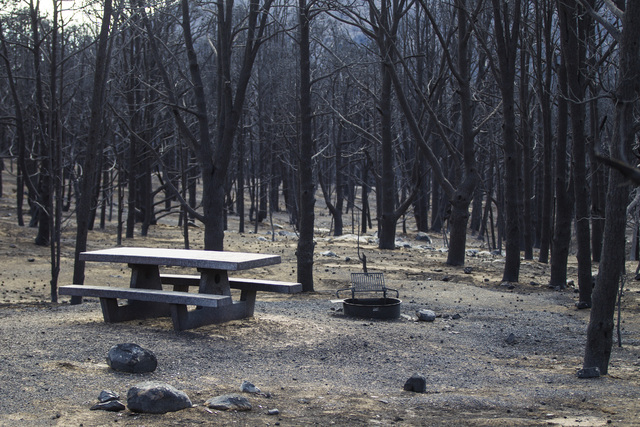
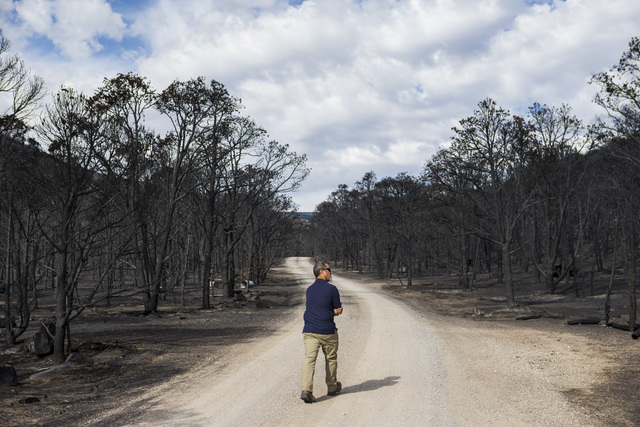
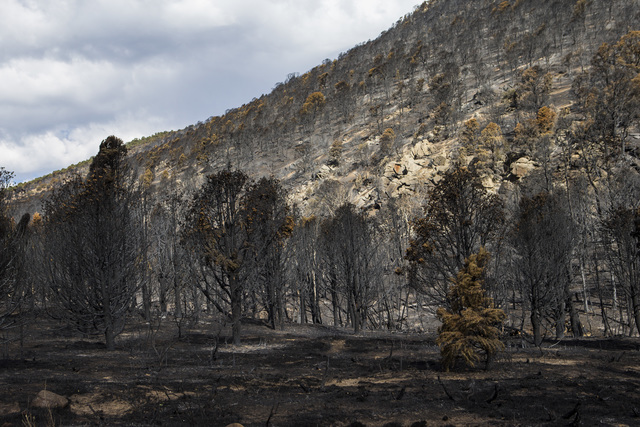



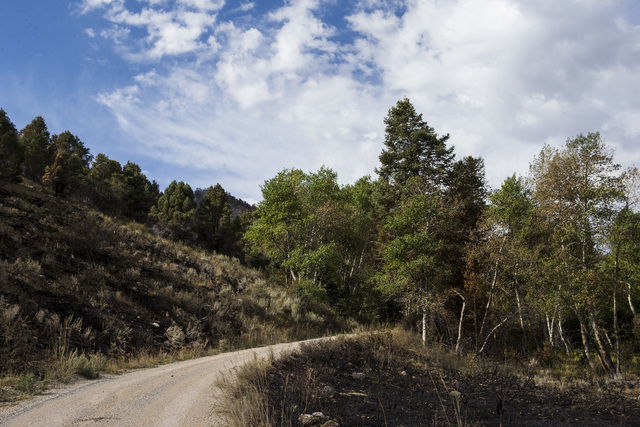
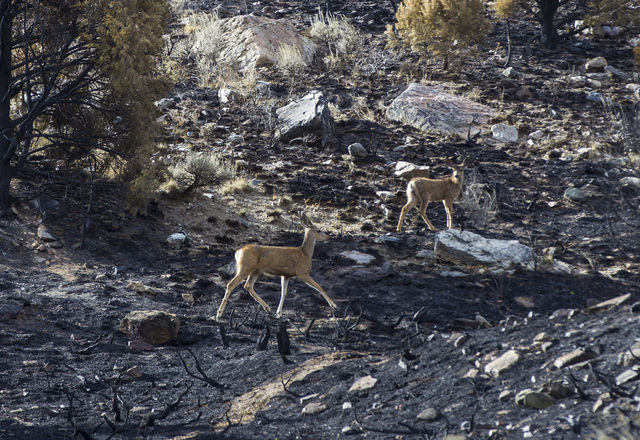
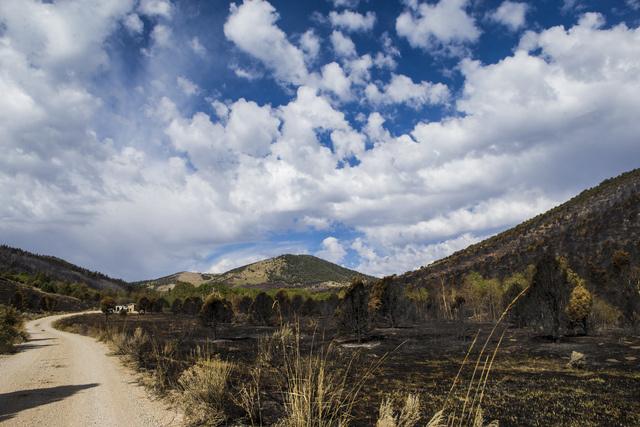
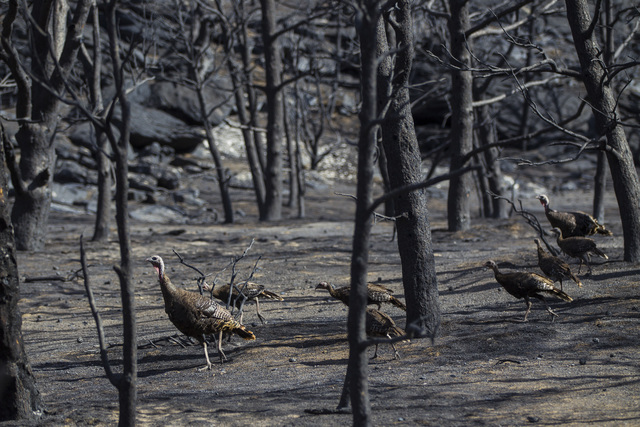
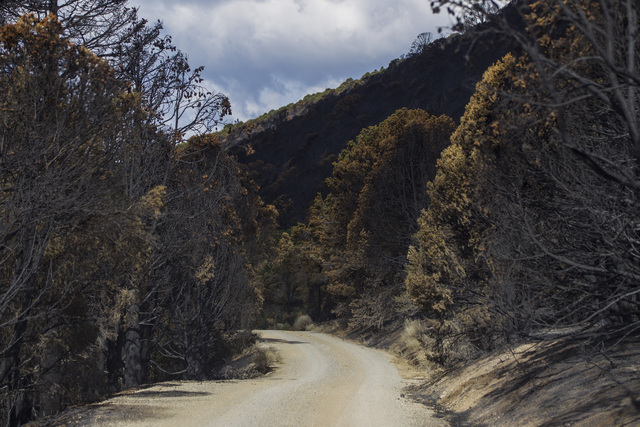
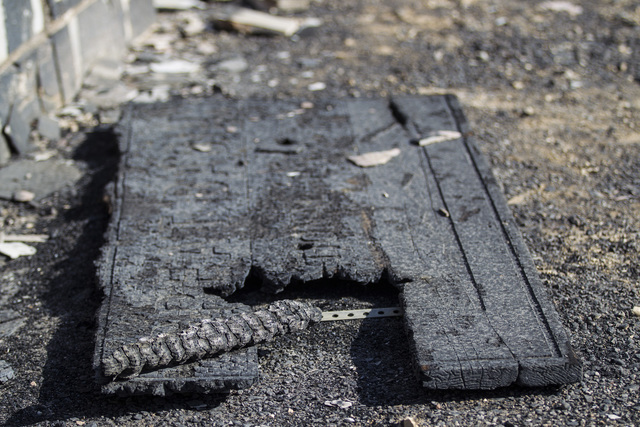


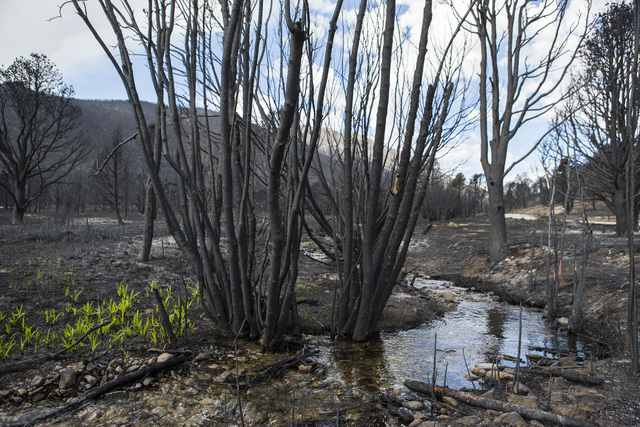

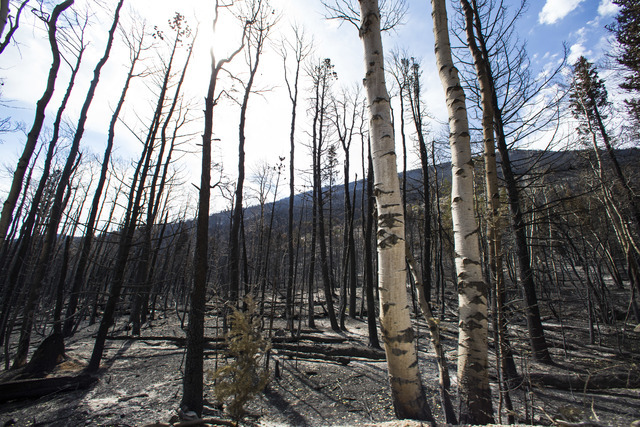
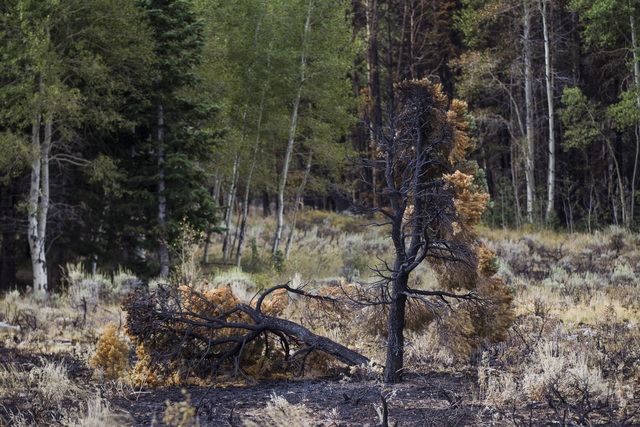
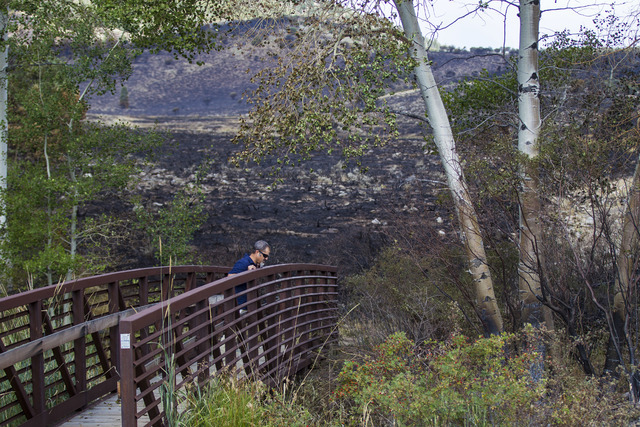

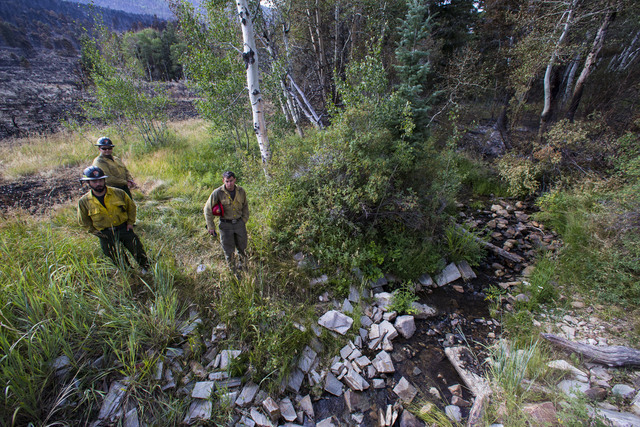
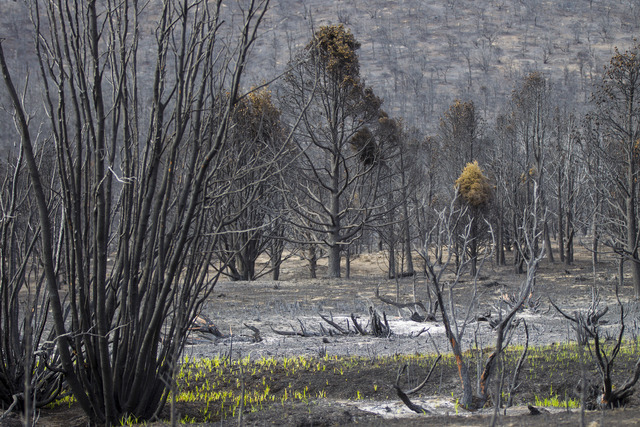

BAKER — The flames are out, but officials fear that the most destructive fire in the history of Great Basin National Park isn’t done destroying things.
On a Thursday tour of the 4,714 acres burned by the Strawberry Fire, two longtime park officials said they expect the area to remain closed for several years, as scorched trees fall and floods scour a barren landscape.
The risk of flash flooding is so great that officials are debating whether to remove and store a wooden road bridge over Strawberry Creek before some raging torrent takes it out.
Already, though, there are signs of recovery in the burned canyon 300 miles northeast of Las Vegas.
Less than three weeks after fire swept through the area, bright green willow and sedge plants have sprouted along the creek’s ash-covered banks. A gawky bunch of young turkeys crossed the road to peck their way through the burned forest. A small group of deer, including a spotted fawn, trotted up the slope above the creek as a vehicle approached.
The Strawberry Fire was sparked by a lightning strike, most likely on Aug. 5 or 6. It smoldered unnoticed in a stand of white firs until Aug. 8, when it erupted and raced down the canyon, pushed by wind and hot weather.
It took 11 days to fully contain the stubborn fire, but not before it claimed the life of Justin Beebe, a U.S. Forest Service firefighter from a Montana-based hotshot crew.
From the top of Strawberry Creek Road, Tod Williams, chief of resources and planning for the park, pointed to the spot high up on the ridge line where the 26-year-old was killed by a falling tree.
Thousands of blackened trunks and snags now dot the canyon. Ben Roberts, Great Basin’s chief of natural resources, said the Park Service can’t possibly cut them all, so most will be left to fall on their own. As long as that’s happening, it isn’t safe for people to camp or hike in the area.
FISH IN THE FIRE
Arguably the worst damage happened — or soon will — to the creek itself.
In 2002, the Park Service began reintroducing Bonneville cutthroat trout to Great Basin as part of a multi-agency effort to return the fish to its historic range. Strawberry Creek was the first place the trout were released, and the species flourished there, eventually reaching numbers as high as 800 per mile.
The fire wiped out much of that work, Williams said.
An untold number of fish were killed when the fire heated the water and fouled it with ash and debris. But Williams and Roberts are more concerned about the possible habitat catastrophe to come.
With much of its protective plant-cover burned, there is little left along Strawberry Creek to shade it from the sun or prevent it from filling with ash and dirt.
Roberts said the inevitable flooding and erosion will likely cover the trout’s spawning beds in sediment and change the water chemistry, leaving large portions of the creek uninhabitable for the fish.
With storms in the forecast, Roberts raced up the canyon Monday with an eight-person crew to collect as many Bonneville cutthroat as possible. Using electric probes to shock the fish, the crew gathered more than 200 in under four hours.
The fish were released into another creek where the trout was due to be reintroduced soon anyway.
Roberts guessed it could take three to five years for Strawberry Creek to recover, and that’s “if we get super lucky.”
“So much of it is going to depend on the weather,” he said.
THE LONG ROAD BACK
The same goes for the Strawberry Creek Campground.
Any big flood through the canyon will almost surely take out the road and at least some of the dozen or so campsites.
Williams suspects the campground, which underwent about $2 million in renovations a few years ago, will need to be completely rebuilt. For now, he said, the concrete picnic tables and metal fire rings will be hauled out and put to use elsewhere in the park.
Before the fire, the Park Service had just started work on a $280,000 fuels reduction project in the area, but Williams said the effort probably wouldn’t have saved the campground. The thinning project was designed to protect the surrounding forest from an errant campfire, not save the campsites from a raging wildfire.
In preparation for the job, a crew from the park’s cultural resources office went out in November 2014 to look for artifacts. That’s when park archaeologist Eva Jensen discovered a weathered, 134-year-old Winchester rifle leaning against a juniper tree on a hill above the campground, forgotten there perhaps a century ago.
That tree is now little more than a blackened stick.
“It’s a good thing they found it,” Williams said of the mystery rifle. “Otherwise it would have been just a burned barrel.”
Ultimately, the fire could turn out to be a good thing for some plants and animals.
Roberts said elk should find plenty to eat in the new meadows opened by the blaze. And aspens that had been on the decline in the canyon could come roaring back, since fire stimulates root growth in the trees.
This also might be the right time to replant some ponderosa pines, which were mostly “logged out” in late 1800s. “There were a few left, but now they’re all gone,” Williams said.
Unfortunately, Williams said, the blaze also leaves the area vulnerable to an invasion of nonnative grasses, which can crowd out local plants and provide fuel for future fires.
“This is prime cheatgrass country,” he said, so keeping that out will be “a major, major part of the job here.”
Roberts said reseeding the burned area with native grasses could help keep invasive species at bay, but the process is complicated and expensive, and the results are as hard to predict as the weather.
Decisions about what to plant and when are now being discussed as part of a long-range fire recovery plan. Roberts said Great Basin has limited resources, so getting it right is key.
“We don’t want to throw our money away,” he said.
Contact Henry Brean at hbrean@reviewjournal.com or 702-383-0350. Follow @RefriedBrean on Twitter.
RELATED
Wheeler Peak Scenic Drive to reopen; Strawberry Fire 90 percent contained
Firefighter dies battling Strawberry Fire near Baker
Strawberry Fire more than halfway contained
Wildfire closes campgrounds, road at Great Basin National Park





